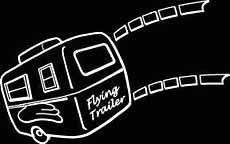

|
|
The Infinite Sustain Feedback System™For Musical Instruments Developed by Al Jewer & Arthur Durkee
The ISFS is an acoustically-coupled feedback driver that was developed in collabotation with Al Jewer.
Answers to some Frequently Asked Questions: (culled from various emails; please excuse some redundancy) As for what a contact driver itself consists of, it's basically the guts of a traditional speaker, but without the cone. Like a speaker, it converts electrical signals into mechanical vibration that in turn move the air (in the case of a speaker) or the body of an instrument (in the case of the driver). It looks like a circular speaker core, about 4 inches in diameter and 2.5 inches thick, and has a thin speaker wire trailing off that ends in a standard 1/4-inch jack. The other commmercial name that contact drivers go by is surface transducer. Here's the data from the BSR's manual you might find useful. I originally bought my unit thru DAK Industries, a mail-order audiophile catalog company that I believe is now defunct. BSR Model SFT-1 Surface Transducer Specifications (per the manual): Type = MC-dynamic, full-range Nominal Impedance = 8 ohm Rated Power Input = 20 watt Maximum Input Power = 50 watt (which is in actuality closer to 60 watt; the 50-watt amps I use don't blow it up, though) Dimensions = 3.3 x 1.25 inches Weight = circa 1 pound "The transducer can be connected to any amplifier speaker terminal that has an impedance of 4ohm-16ohm." One very important ting to remmember when using a contact driver: Do not use an amplifier of higher rating than the driver's own wattage rating. If you do this, you will burn out the driver. Since the BSR is rated at 60 watts, I never use an amp of higher power than 50 watts, for example, a Fender BandMaster. By very careful about this. However, experience has shown that 50 watts, due to the efficient nature of the ISFS's non-air acoustic-coupling system, is more than adequate. Efficiency is more useful than raw power, in this case. You may judge for yourself by listening to an excerpt from this piece that showcases the ISFS: Dry Sea/Farthest Shore. I don't know of any smaller contact drivers. In fact, the BSR is the lightest, smallest contact driver that I have encountered so far. Really, it only weighs about a pound or two, and I have found that with mine semi-permanently attached to my polycarb Stick, which itself weighs about 5 or 6 punds, I have gotten used to the weight. (Of course, I use a wide martial arts belt to wear my Stick when playing, and nowadays usually lean or sit on a chair or stool that is just the right height to give me back support.) Probably a smaller contact driver would work for the Infinite Sustain, though. The system is very efficient, so there isn't a lot of wasted sonic energy going into the air or into heat-loss. If you ever hear of a smaller driver, please let me know. Remember, though, that the key to the contact driver's efficiency is that magnetic core on the back that serves as a reaction mass. A regular small speaker would not work as well, because the magnet in that case is driving a paper cone designed to move air, rather than to transmit sound vibrations into a physical entity such as the body of my Stick. So, even a smaller contact driver still must have a certain amount of reaction mass in order to be effective. Probably nothing smaller than 1/2 the size of the BSR would give enough volume to generate the kind of feedback I want. My BSR is mounted on the back of the fretboard itself, behind the 8th fret (or second "dot" from the top), where I find myself playing most often. The driver does create a "wart" on the back of the instrument, but I have gotten used to it being there, and rarely have a problem with it. Mounting the entire driver/amp configuration on your Stick, even with a custom-built MOSFET-type mini-amp (the lightest technology I can think of), would probably add 5 pounds minimum, not to mention a significant "wart."  With regard to feedback tone: The BSR obviously plays whatever you feed into it. If I am using a clean signal or just a little chorus, that's what I get out of it. If I'm using distortion, that's what I get out of it. Because the Feedback driver comes at the end of my effects chain (a split signal of my actual output from the DI, as described above), it has the same tone quality as whatever effects I'm using. Some of my distortion patches are EQed a little louder, too, so I get more volume coming from the BSR. • Feel free to email me if you have any comments or questions: Stickdragn@aol.com Before you email, however, please be aware that I am not a commercial producer or manufacturer. This is a custom solution to a specific musical problem. I am happy to help you figure things out for yourself, however I am not in a position to produce an ISFS unit for you. I am happy to answer your questions, however almost everything I could tell you is already given on this page. Blessings. Additional Sample Tracks, for your listening pleasure: Ancient Girl, with Dangerous Odds Begging Bowl, with Dangerous Odds |


Entire Contents of this Website
and All Music, Musical Excerpts, Scores, and related Artwork
on this Music Page and links are
© 1992–2015 Arthur Durkee/Arthur Durkee Music.
All Rights Reserved.
Email: Stickdragn@aol.com